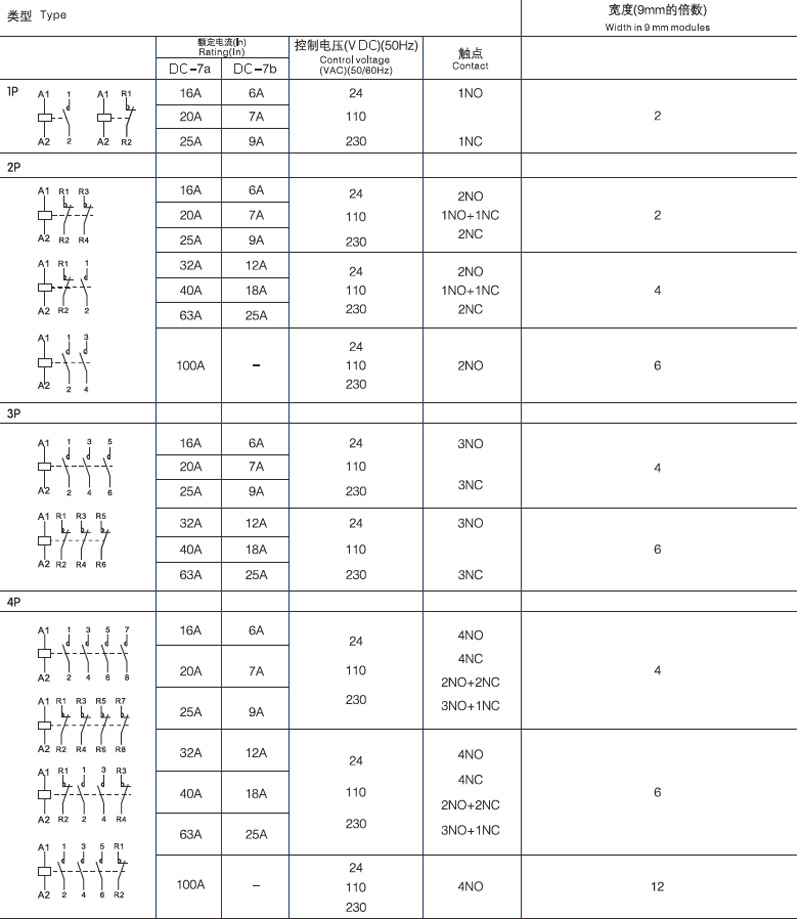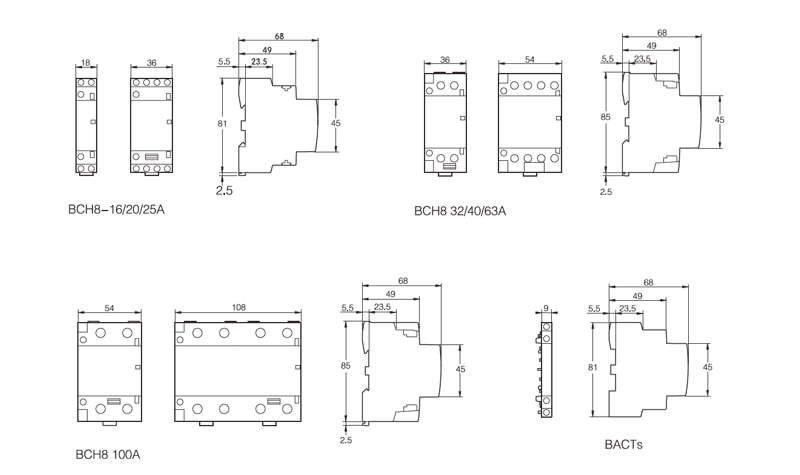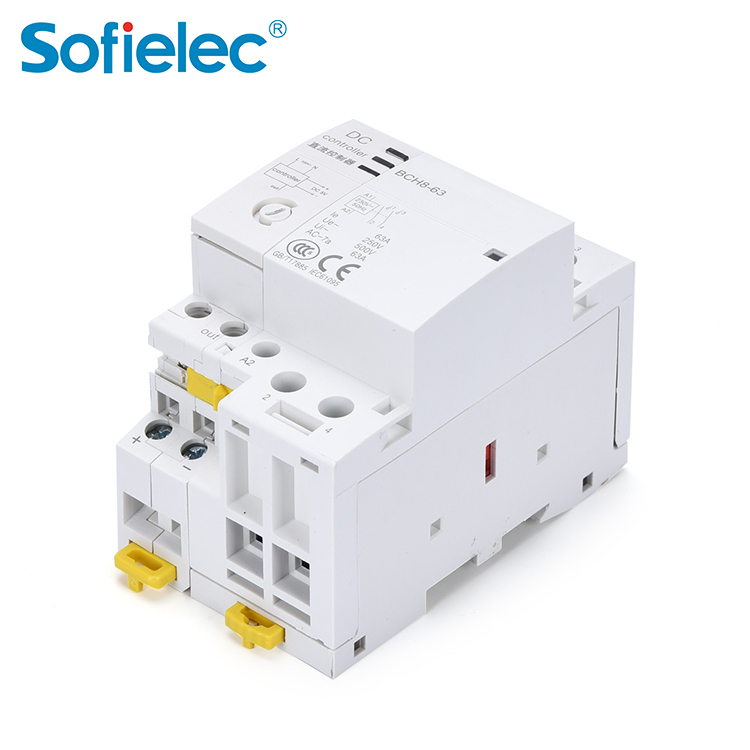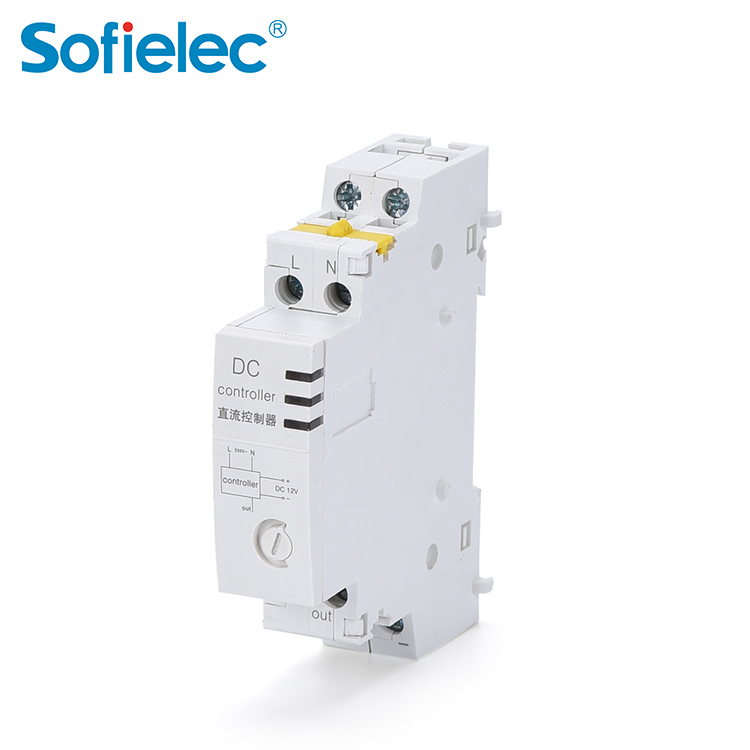| Categories | Contactor |
| Model | DC BCH8 Contactor |
| Voltage rating | 1P2P 250V DC/3P4P DC |
| Frequency | 50/60Hz |
| Electrical | 100000 |
| Insulation vwltage | 500V DC |
| Pollution degree | 2 |
| Rated impulse withstand voltage | 2.5KV |
| Operating temperature | -5℃~+60℃ |
| Storage temperature | -40℃~+70℃ |
Catalogue Numbers

Technical data
| Power circuit | ||
| (Ue) Voltage rating(Ue) | 1P,2P | 250V DC |
| 3P,4P | 400V DC | |
| Frequency | 50/60Hz | |
| Endurance(P-C) | ||
| Elctrical | 100,000次 | |
| Maximum number of switching operation a day | 100 | |
| Additional characteristics | ||
| Pollution degreee | 500V DC | |
| Pollution degree | 2 | |
| Rated impulse withstand voltage(Uimp) | 2.5kV(4kV@ 12/24/48VDC) | |
| (IEC 60529) Degree of protection (IEC 60529) | Device only | IP20 |
| Device in modular enclosure | IP50 | |
| Operating temperature | -5℃~+60℃ | |
| Storage temperature | -40℃~+70℃ | |
| Tropicalization(IEC 60068-1) |
Treatment 2(reltive humidity 95% at 55℃) |
|
|
ELSV compliance(Extra Low Safety Voltage) for 12/24/48vac versions |
||
|
The product control conforms to the SELV (saftey extra low voltage)requirements |
||
Connection

Consumption
| Type | ||||||||
|
Raring(ln) |
Contrd voltage (VDC)(50/60Hz) |
Consumption |
Max. power |
|||||
| DC-7a | DC-7b |
Holding |
Inrush |
|||||
| 1P | 25A | 9A | 230...240 | 2.7VA | 9.2VA | 1.2W | ||
| 2P | 16A | 6A | 230...240 | 2.7VA | 9.2VA | 1.2W | ||
| 20A | 7A | 230...240 | 2.7VA | 9.2VA | 1.2W | |||
| 25A | 9A | 24 | 3.8VA | 15Va | 1.3W | |||
| 230...240 | 2.7VA | 9.2VA | 1.2W | |||||
| 230...240 | 2.7VA | 9.2VA | 1.2W | |||||
| 40A | 18A | 220...240 | 4.6VA | 34VA | 1.6W | |||
| 63A | 25A | 220...240 | 4.6VA | 34VA | 1.6W | |||
| 100A | - | 220...240 | 6.5VA | 53VA | 2.1W | |||
| 3A | 25A | 9A | 220...240 | 4.6VA | 34VA | 1.6W | ||
| 40A | 18A | 220...240 | 6.5VA | 53VA | 2.1W | |||
| 63A | 25A | 220...240 | 6.5VA | 53VA | 2.1W | |||
| 4A | 16A | 9A | 220...240 | 4.6VA | 34VA | 1.6W | ||
| 25A | 9A | 24 | 4.6VA | 34VA | 1.6W | |||
| 220...240 | 4.6VA | 34VA | 1.6W | |||||
| 24 | 4.6VA | 34VA | 1.6W | |||||
| 220...240 | 4.6VA | 34VA | 1.6W | |||||
| 220...240 | 4.6VA | 34VA | 1.6W | |||||
| 32A | 12A | 220...240 | 6.5VA | 53VA | 2.1W | |||
| 40A | 18A | 220...240 | 6.5VA | 53VA | 2.1W | |||
| 63A | 25A | 220...240 | 6.5VA | 53VA | 2.1W | |||
| 220...240 | 6.5VA | 53VA | 2.1W | |||||
| 220...240 | 6.5VA | 53VA | 2.1W | |||||
| 220...240 | 6.5VA | 53VA | 2.1W | |||||
| 100A | - | 220...240 | 13VA | 106VA | 4.2W | |||
Dimensions

Video
> What are the four types of timer switches?
A time switch, often simply referred to as a timer, is a device that automatically controls when an electrical circuit is turned on or off. It's like a programmable ...
> Can You Replace a 10 Amp Breaker with a 20 Amp Breaker?
Replacing a 10-amp circuit breaker with a 20-amp one without a thorough professional evaluation is extremely dangerous and poses a significant fire hazard. Let's ana...
> What Makes a Circuit Breaker Essential for Home Electrical Safety?
Home electrical safety ranks high on every homeowner’s priority list, yet many overlook the quiet workhorse that prevents crises before they start. This device acts ...
> What Scenarios Require the Use of a Residual Current Circuit Breaker?
Electrical safety is a top priority in daily life and work, yet many people are unsure when to use a device that guards against electric shock. This article explains...








